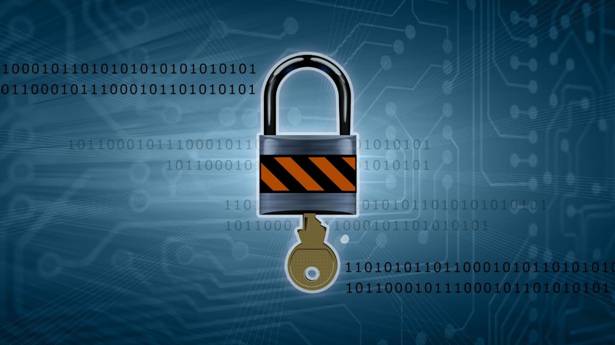Cybercriminals are keeping up with the pace of software engineers, which is why the breach and patch game is endlessly going on.
As business owners, we have to ensure that we keep our software updated with the latest security patches in the market to avoid catastrophe.
So, where does cyber risk management fit in all this?
Well, to understand that, we first need to know what is cyber risk management?
CRM is a framework designed for modern businesses to tackle the ever-growing threat of cybersecurity.
CRM involves using the latest security measures that help protect its website and data from cyber theft.
But, how do you create such a framework?

Well, it is a five-point process that we have discussed under:
How to create a cybersecurity risk assessment framework?
Before we understand how to create this framework, let us tell you, this is not a one-time process. It keeps on changing depending on the advancement in cybersecurity.
The way cybermarket functions, you must twerk and twist this framework accordingly to make it a perfect fit for your business.
So, here is the process:
Identify the things at risk
The framework starts with identifying your files, databases, devices, and business information at risk.
If you don’t know what you are risking, the question of protection does not even arise. So, list down all that you think might be a cybersecurity risk.
A complete business audit might help you out in this.
Identify third-party companies that have access to your data.
As a business, we outsource our business processes to distribute the overall ovum. But, if they are breached, your information will be readily available to them.
So, you must figure out who your third-party contractors are and what level of your business information they possess.
Identify internal & external threats
Next, you must know what your threats are. Weak password hygiene, untrained staff, and unaccountable database access are all parts of internal threats.
On the other hand, attacks due to the absence of HTTPS encryption, firewall, and antivirus all come under external threats.
Identify potential attacks
It is time to rate breaches based on their chances of happening. It would help if you listed down cyberattacks that you feel can occur shortly based on how lethal they are.
Identify which risks can give you a hard knob.
Out of all the risks that you have listed in the above point, which ones do you feel can devastate your business?
For example, an eCommerce business might face a prominent risk of the breach of their customer’s sensitive data such as bank details and login credentials.
Similarly, which risks haunt your business the most?
Based on all these five points mentioned above, the solutions can be calculated and implemented wisely.
This strategic planning can help a business create its risk management framework.
Now that we have looked at the framework, let us look at some of its benefits:
Benefits of cybersecurity risk management
CRM helps identify business vulnerabilities
If you know what your flaws are, finding answers to them becomes easy.
Cyber risk assessment audits your entire business framework and helps you in figuring out where the loopholes are.
It helps you list down potential threats and provide optimum solutions for them.
The best part about it is that points in this framework never remain the same. On the contrary, they keep on changing based on the vulnerabilities and the cybersecurity technology.
So, while following this framework, you will always find yourself implementing new tactics to tackle cybercrime.
CRM helps in identifying security requirements
Through the CRM framework, you can figure out the security requirements of your business.
The framework stresses the use of SSL certificates for all.
An SSL or Secured Socket Layer certificate is a security protocol that protects a website’s connection by encrypting all the in-transit communication through Public Key Infrastructure.
SSL comes in three variants a) Regular Single-Domain, b) Wildcard and c) Multi-Domain SSL.
Regular SSL
A regular positivessl is a single domain certificate which means that it can only protect a single domain or subdomain at a given time. This is suited for sites that have just one domain to secure, like blogs, etc.
Wildcard SSL
On the other hand, a wildcard SSL can protect the primary domain and its subdomains to level 1. The preferred choice for webshop owners is cheaper and provides the optimal level of security for sites looking at future expansion.
Multi-Domain SSL
The multi-domain SSL will do the trick if a business needs to afford premium encryption to multiple domains and subdomains at varying levels. It can secure up to 250 FQDNs. You can invest in a cheap multi-domain SSL that will provide the same level of security as the more expensive ones.
So, get your SSL certificate now.
CRM promotes employee training
As business owners, we all know how vital employee training is for our business growth.
CRM promotes employee involvement in cybersecurity issues as they too have their share of responsibility to fulfill.
A responsible C-suite does not go well with a lousy workforce which is why the framework focuses on figuring out the most important employees of the organization and tests their ability to counter cyberattacks.
Moreover, the framework only completes when all employees from top to bottom are equally trained and motivated to better the business.
To Conclude
In 2021, a robust risk management system is the need of the hour. With the mounting cybercrime, businesses have to identify the loopholes and what they can do to fix them.
The use of security protocols like SSL certificates and firewalls is a must-have in today’s unsafe online environment.
Businesses can prepare themselves for the worse through the CRM framework by actually getting to know themselves better.
Employee training is also a crucial part of CRM. Untrained employees are like weak passwords for cybercriminals. It is easy to guess weak passwords; phishing attacks can easily trick untrained employees.
So, if a business wants to flourish in 2021, it needs to comply with the cybersecurity risk assessment framework mentioned above.



